#javascript history
Explore tagged Tumblr posts
Text
𝚍𝚎𝚟𝚕𝚘𝚐_𝟶𝟸.𝟷
Moa's Ark & Zealandia
https://www.nzonscreen.com/title/moas-ark-1990/series
Moa's Ark (1990s TV series) opening animation. It was during the 90's that scientists formulated the "Zealandia" protocontinent theory and complexity of how species migrated over time, putting the last nail in the coffin of the idea that everyone got a free ride over on a piece of Australia. Going through Aotearoa's natural history doco archives has been a lot of fun.
Hello again! I took a bit of a break in posting long- form updates, but I think there's enough on my mind for a second batch of posts this week. After that there will again just be small updates on the Instagram until May - when I may have some sort of concept media for the sim to show off. For now I'll aim for a focused peek into a couple of aspects of it as usual.
This post is going to be all about the Moa, the species that got me hooked on this project. It's also going to be about species variation, and the tension between scientific accuracy and visual accessibility.

Moa skeletal reconstitutions at Te Papa Tongarewa, Museum of New Zealand.
A couple of interesting facts about the moa;
-We currently classify them as nine species. Here is a full catalog of every time someone thought they'd found a new one:

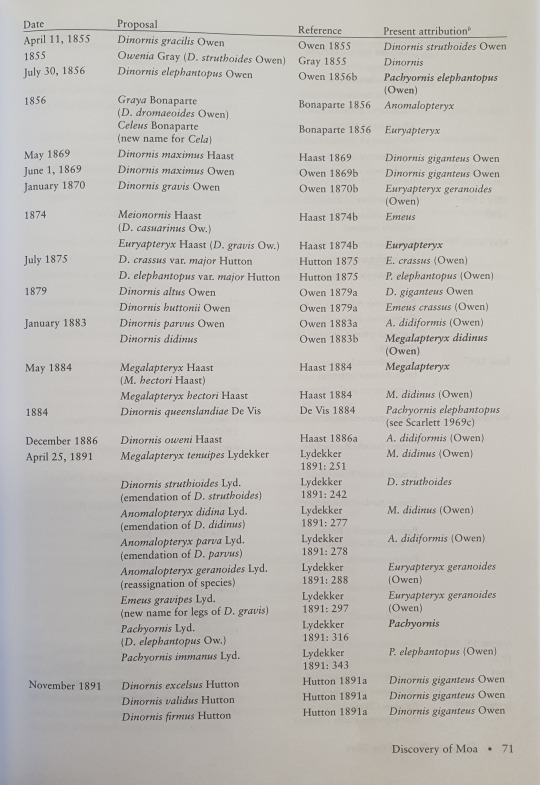
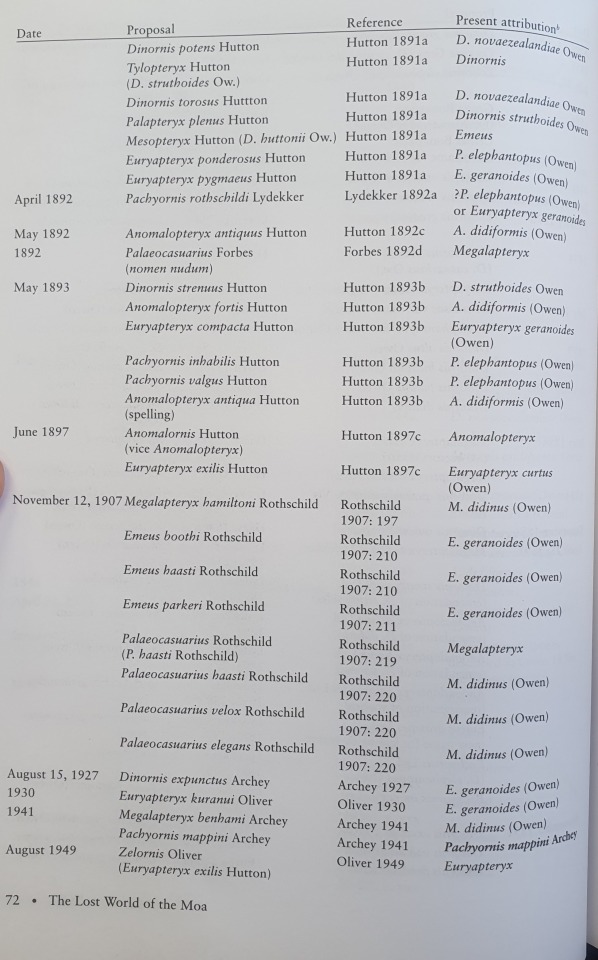
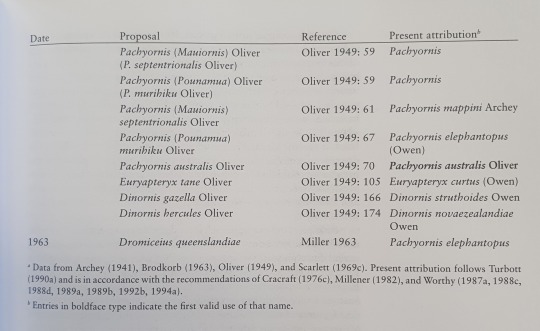
-Within many species, female moa can be more than twice the size of males (yes, this is one reason so many moa "species" were identified)

-Moa are unique in that they had no wings (not even the kiwi's tiny t-rex stubs) and, thank goodness because so many NZ species can be traced back to evolving from Australian fauna, their closest past relatives are South American tinamous rather than the emu.
-They also got a bad wrap for their past perception as tall, emu- like, big dumb grass grazers. Actually, while they're nowhere near as smart as multi-sense-foraging kiwi, they could identify and feast on a whole variety of twigs, herbs, leaves and berries - most of which were found in the more common forest than grassland.
This is why they have a bulky build and head-forward posture (until kinda recently, museum curators tended to give them that tall, emu/giraffe like posture, even adding extra vertebrae for show.)

Whanganui Regional Museum (This isn't close to the worst examples)
So; how do I even begin to approach the scope, as well as potential uncertainty, of data we have on the Moa?
Here's one way: Oversimplification!
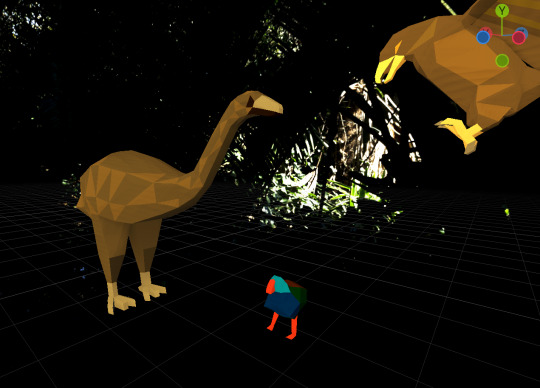
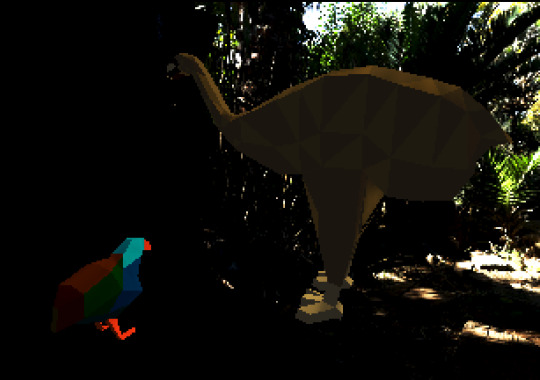
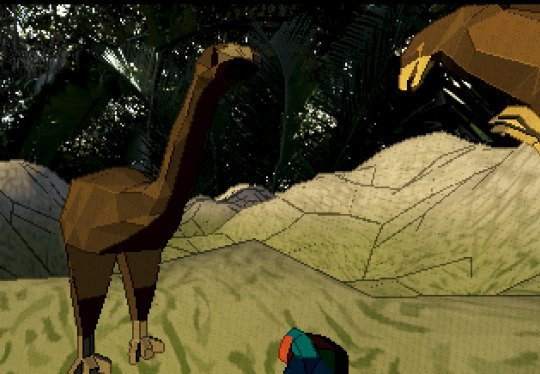
Screenshots from Godot editor & runtime previews for compatibility (web) mode and forward+ (basically more shaders) renderer. The camera is RTS- style; getting the runtime shots was a bit finnicky.
I've started to build low-poly models in Blender for the fauna, which in the future I'd love to rig for animation and get super technical with appearance variation. For now I'll focus on the system for placing them in the right biome and basic pathing behaviour, and the Moa will be a North Island giant moa based vaguely off this model for an AR national park exhibit: https://moaparkotorohanga.wordpress.com/2014/07/08/a-collection-of-moa-feedback-from-trevor-worthy-and-lizzy-perrett/

While I'm not working directly on the simulator for the next while, I am building this 2D tool to represent the moa's species variation; it is *incredibly* helpful to have just set up a system where I can add and edit instances of a broader Moa "class", and I'm looking forward to giving each species its visual character (the main creative liberty I'll be taking is colour coding from grey to brown to communicate which of New Zealand's islands each species populated, as well as their preferred biome (there's 3 main ones: subalpine mountain, wet podocarp forest, dry forest/ lowland)

Moa "collection" project at time of writing.
If this exercise has highlighted anything though, it's just how difficult it is to reduce life's complexities to a single shape that represents a single numeric value. Those who read my last posts may remember that any given moa species' size may have varied over time and with temperature, (generally bigger during ice ages and smaller out of them) along altitude, (generally bigger and bulkier higher up) and just within species based on how they adapted to any given place. Not to mention the relatively massive lady moa.
And since we're only working with what's left of them all - the only intact gizzard samples proving that whole diet theory, and most of the remains we have to work with, are those found in Pyramid Valley in Canterbury (a swamp with surrounding mosaic of vegetation and forest) - who knows how to truly depict what life was like tens of thousands of years ago.





From the Moa book by Quinn Berentson


A very cursed JavaScript "spreadsheet".
So, very long-winded post. I hope you found something interesting within! Something that made you think about nature's craziness maybe. I meant to get across just how much there is to scientific communication, and I barely touched on how I aim to keep the overall narrative in focus (or basically be aware of it.)
I can't wait to work on this more collaboratively, with folks who really know their stuff about ecology and the cultural aspects of Aotearoa - I think the potential for collaboration and education is what's keeping me going with this project.
Until next time ! - here's some of my highlights from a trip to the Zealandia ecosanctuary.

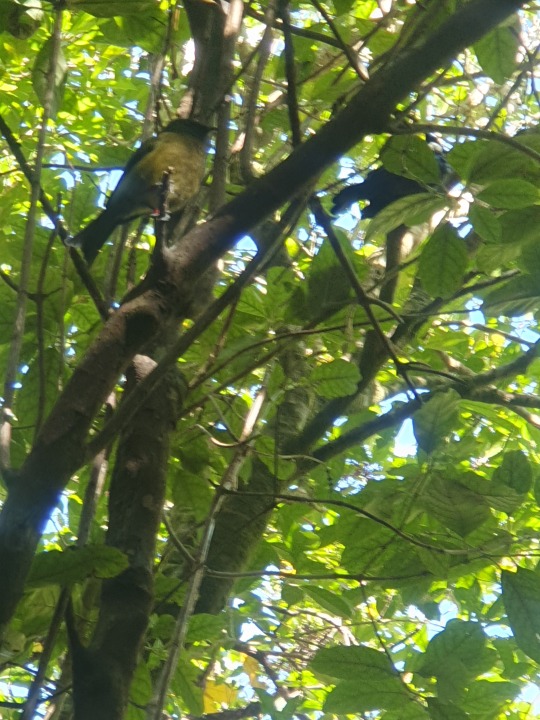

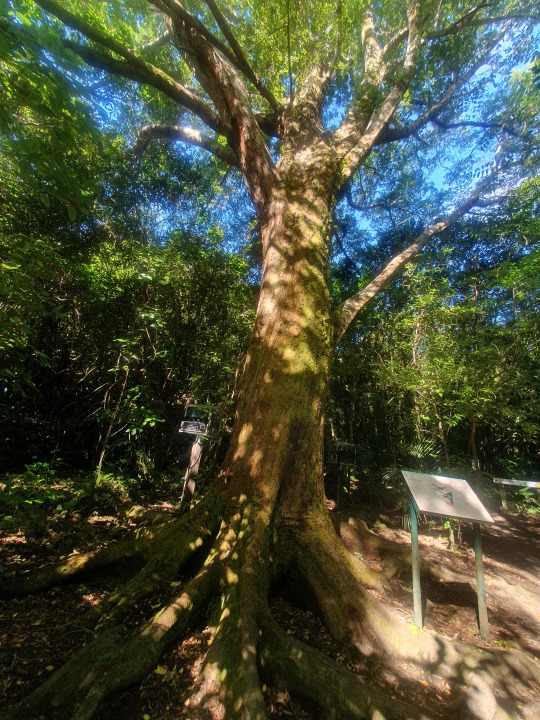





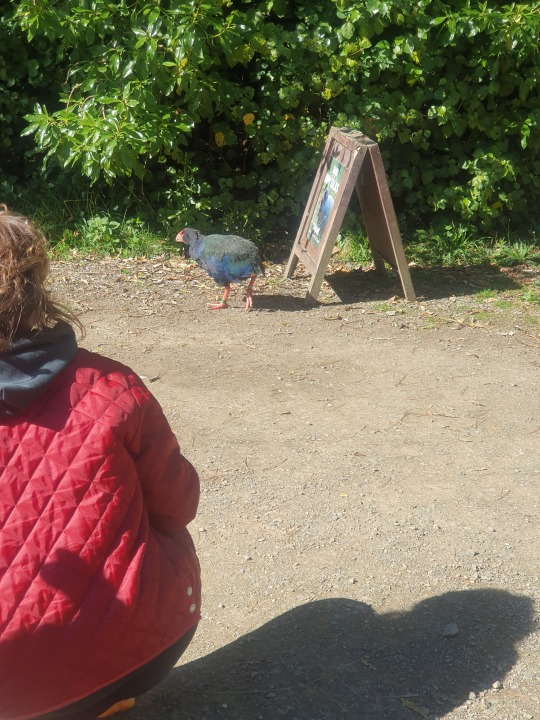
Kia hora te marino
Kia whakapapa pounamu te moana
Hei huarahi mā tātou i te rangi nei
Aroha atu, aroha mai
Tātou i a tātou katoa
Hui e! Tāiki e!
May peace be widespread
May the sea be like greenstone
A pathway for us all this day
Let us show respect for each other
For one another
Bind us all together!
#devlog#gamedev#indiedev#programming#birblr#moss#plants#aotearoa#oceania#natural history#nature#godot engine#javascript#ecology#science
3 notes
·
View notes
Text

#ao3#astrophotography#biology#astronomy#crystals#bakudeku#danny phantom#book quotes#destiel#encouragement#dyed hair#agatha harkness#javascript#hugh jackman#sunday hsr#black history#history#boku no hero academia#jane austen#ancient egypt#eerie#yupoo#yarn#yoga#youtube#older man younger woman#this is what makes us girls#genshin impact#happy new year#gaming
0 notes
Text
Exploring the Objects in JavaScript BOM: In-Depth Tutorial

As web developers, we are constantly immersed in the world of JavaScript and its various components. Among these, the Browser Object Model (BOM) plays a crucial role in interacting with the browser and enhancing user experience. In this blog post, we will delve into the realm of BOM, understanding its significance, and discovering how Webtutor.dev can be your ultimate resource for mastering this essential aspect of web development.
What is the Browser Object Model (BOM)?
The Browser Object Model (BOM) is a crucial part of JavaScript that provides a bridge between the web browser and the webpage's content, allowing developers to control and manipulate the browser window. Unlike the Document Object Model (DOM), which deals with the structure and content of the webpage, the BOM handles aspects such as the browser history, location, navigator, and more.
The BOM provides a set of objects, properties, and methods that empower developers to interact with the browser and obtain information about the user's environment, enabling the creation of dynamic and responsive web applications.
Understanding the Key Components of BOM
Window Object
The window object is the top-level object representing the browser window or tab. It serves as the global object in the browser environment and provides access to various properties and methods related to the browser window.
Screen Object
The screen object represents the user's screen and provides information about its characteristics, such as the width, height, color depth, and pixel density. With this information, developers can create responsive designs that adapt to different screen sizes and resolutions, offering a seamless user experience across devices.
Navigator Object
The navigator object contains information about the user's browser, such as the name, version, and platform, enabling developers to create browser-specific functionalities and optimizations.
Location Object
The location object represents the current URL of the web page and allows developers to interact with the browser's location bar, enabling navigation to different pages and manipulating the URL.
History Object
The history object provides control over the user's browsing history, enabling developers to navigate forward and backward through the pages the user has visited during the current session.
Timing Events
The timing events are an essential aspect of the BOM that allow developers to execute code at specific intervals or after a certain delay. Functions such as setTimeout() and setInterval() enable developers to schedule code execution, making it possible to create animations, periodic updates, and timed interactions in web applications.
Popup Alerts
One of the simplest yet effective features of the BOM is the ability to display popup alerts. These alerts are often used to deliver important messages, validation errors, or prompts to the user. With just a few lines of JavaScript code, developers can create these popup alerts, enhancing the overall user experience on their websites.
Cookies
The cookies are small pieces of data stored on the user's computer by websites they visit. The BOM provides a way to create, read, and delete cookies, which are often used to store user preferences, authentication tokens, and other information that helps websites deliver personalized experiences to users.
Why Choose Webtutor.dev for Mastering BOM?
Webtutor.dev is your go-to resource for learning and mastering the Browser Object Model and all its intricacies. Here is why it stands out as the perfect platform for developers of all levels:
Comprehensive BOM Tutorials
We offers a comprehensive set of tutorials specifically focused on BOM, covering each aspect in detail with practical examples that reinforce your understanding.
Interactive Coding Exercises
Learning by doing is essential in web development, and we provides an array of interactive coding exercises that challenge and refine your BOM skills.
Real-world Projects
Take your BOM knowledge to the next level by working on real-world projects, guided by experienced instructors, to gain hands-on experience and build your portfolio.
Community Support
Join a vibrant community of developers on our platform, where you can engage in discussions, seek help, and collaborate on projects to enhance your learning journey.
Constantly Updated Content
We ensures that its content is up-to-date with the latest trends and best practices in web development, ensuring you stay relevant in the ever-evolving tech landscape.
Conclusion
The Browser Object Model (BOM) plays a critical role in web development, enabling developers to interact with the browser and create dynamic and engaging web applications. Understanding the various components of BOM is essential for any web developer, and Webtutor.dev offers the perfect platform to master this crucial aspect.
Whether you are a beginner eager to explore the basics or an experienced developer looking to refine your skills, Webtutor.dev provides a wealth of resources, interactive exercises, and real-world projects to support your learning journey. Embrace the power of BOM and unlock your full potential as a web developer with Webtutor.dev today!
#Key Components of BOM#Browser Object Model#Exploring the Objects in JavaScript#Learn javascript online#JavaScript Window#JavaScript Window Object#JavaScript Screen Object#JavaScript Navigator Object#JavaScript Location Object#JavaScript History Object#JavaScript Timing Events#JavaScript Popup Alerts#JavaScript Cookies#Comprehensive BOM Tutorials
1 note
·
View note
Note
hey dog! sorry to bug you with a coding question, but i'm learning rpg maker mv for a fangame & i'm wondering how you did a couple things. if it's not too much trouble, could you quickly explain some of it? i've scrounged around as much as i can but i cant find what i need so i thought it'd be worth asking directly ^^;
how did you get the players name to show up in the message log? i know theres a plugin that adds the name windows for other characters & i've got that figured out, but i have no idea how to get the players name to show up in the history after selecting stuff
how'd you get the graphic for the route diverging choices to show & play During choices? so far ive figured out that looping the images recreates the visual but then the game doesn't progress, bc its just stuck in that loop...
how'd you disable ( + grey out) dialogue options after selecting them??
how'd you add the fullscreen option? i found a code that was supposed to add a fullscreen option to the optionscore settings but that one just breaks the plugin & i simply Don't know enough javascript to figure it out myself
i'm using all the same plugins that dialtown has so clearly these are possible without extra ones, i just don't know how to do it,, thanks for explaining your pronoun system a little while ago btw! i wasn't the one who asked but your post was super helpful when i was setting it up for myself :D
It's been close to 6 years since I started making DT, and I had to figure out a few solutions to specific issues that cropped up which I've likely forgotten now, but I'll answer what I can remember. I'm also gonna give you some advice and advise you not to use RPG Maker for projects like these.
I basically Scott Cawthon'd DT and forced the engine to yield to my demands because I wanted to use the one I knew best. A few of these solutions are over-complicated because the easier ones (which would've worked in other engines) had to be constructed differently. I'll also mention a few solutions to problems you might not have encountered (but inevitably will if you try to recreate DT.) With that out of the way...
1)

You'll want these settings for the backlog plugin. the \c[x] commands refer to standard name colours. Log special inputs set to true, followed up by this below:
\n<\c[4]\n[1]\c[0]>%1
With \n[1] being the name you want and the number after the first c being what colour you want.
I'll also save you a potential future issue: I'd actually recommend you find the backlog plugin I used in DT's files (located inside the www/js/plugins folder) and use the version I have instead of the official release if you're not already, because I made a small change to fix an error. Basically, it breaks slightly with the plugin that lets you bring up the menu during dialogue because text reloads when you leave the menu and re-enter the text box, causing text to be logged at least twice after you pause it. If you keep bringing up the menu, you'll get constant duplication. I simply added a line of code that tells the log not to have two duplicates in a row. Not a programmer, but it seems works.
2)I did it in a funny way to ensure the engine wouldn't screw it up. Basically, there's 3 steps to the event and it's kinda hard to explain (and would be annoying to reproduce without a lot of trial and error for a beginner.) It's easier if I show my code. The first thing I do is run a common event (you can also just paste this code in and run it from the event) that renders the frames used by the popup, so they're loaded into memory + ready to go.

As you can see, they're set to 0 opacity but now ready to be used. Obviously they have to be on a layer that isn't being used by anything else in the scene (and won't be during this part of the game.) I run this event ahead of time, usually 4 messages before the choice comes up or so, so even slower PCs should have time to get them up.
The 'if head' thing just switches between the files for phone/typegingi's heads. I render each frame on separate layers and toggle their opacity from one to the next on a single frame to avoid flickering (bc RPG maker's renderer is hot trash and I have to work around it. Case in point.)
Step 2 is a second command event that orders the frames to fade in.

One layer is the text (which doesn't move) and the other is the first frame of the little head animation. A switch is also turned on at the end, and this signals the animation to go, which is handled by an event on any map where a choice like this comes up.
The event page that handles the animation itself has 2 pages, one to handle the animation as it goes and the other to handle when it stops (note that you could use one page and simply use a conditional branch. I didn't.)

Set to parallel so it runs in the bg behind normal events. As you can see, every 17 frames, I command one image to fade out over a single frame and another to fade in. It loops perfectly, cycling from middle frame, to left, to middle, to right, back to middle. Finally, when you select any route diverging choice, it sets off a second switch, which activates the second event page and commands the game to dispose of the graphics and then turn itself off.

Basically, it's the same animation but with a twist. The text is faded out over 60 frames and then the same animation is played as before, except the values it fades back into go from 255, to 170 to 85. Each of those commands is also followed by a 17 second fade to the opacity of the next frame. So, frame one renders in one frame at 255. Then seventeen frame fadeout to 170... Next frame renders for 1 frame AT 170, then fades out gradually to 85. Then next frame renders at 85 during 1 frame, fades to 0. This is how i synced the turning animation to fade out convincingly.
At the very end, I turn both of the switches this event page uses off so both event pages don't continue on loop. I also have a check for the first event variable to check if the game should still think the animation is running, as a failsafe. I don't remember if this mattered.
3)It's a function in the YEP Extended Message Pack. You'll see the commands for hiding (temporarily removing) + disabling choices (greying them out) as you scroll through the help list, almost 2/3 down. The thing you have to remember though is that messages that are commanded to be hidden/disabled will STAY disabled unless you turn them back on. So, ANY time there's a possibility to make a choice with a disabled or hidden message, add this plugin command to EVERY selectable choice
ClearChoiceSettings
This will ensure the game doesn't break from having a choice permadisabled. If you use loops or labels to make the game return to a previous choice, make sure the looping point is BEFORE any logic that may disable/hide a choice so it doesn't autoenable everything if the game has to go back.
4)Make a new RPG Maker project, copy the js folder from www/data/js and open the new project alongside your other one. Then check my YEP Option core plugin and follow this path in the plugin editor

This code should work.
On a similar note, I'd also take a look at how my plugins are ordered, if your list is different. I had to meddle with the list to make sure some plugins functioned correctly. This engine is held together with duct-tape and spite, so do what this advice what you will.
Hope this helps!
90 notes
·
View notes
Text
A structured way to learn JavaScript.
I came across a post on Twitter that I thought would be helpful to share with those who are struggling to find a structured way to learn Javascript on their own. Personally, I wish I had access to this information when I first started learning in January. However, I am grateful for my learning journey so far, as I have covered most topics, albeit in a less structured manner.
N/B: Not everyone learns in the same way; it's important to find what works for you. This is a guide, not a rulebook.
EASY
What is JavaScript and its role in web development?
Brief history and evolution of JavaScript.
Basic syntax and structure of JavaScript code.
Understanding variables, constants, and their declaration.
Data types: numbers, strings, boolean, and null/undefined.
Arithmetic, assignment, comparison, and logical operators.
Combining operators to create expressions.
Conditional statements (if, else if, else) for decision making.
Loops (for, while) for repetitive tasks. - Switch statements for multiple conditional cases.
MEDIUM
Defining functions, including parameters and return values.
Function scope, closures, and their practical applications.
Creating and manipulating arrays.
Working with objects, properties, and methods.
Iterating through arrays and objects.Understanding the Document Object Model (DOM).
Selecting and modifying HTML elements with JavaScript.Handling events (click, submit, etc.) with event listeners.
Using try-catch blocks to handle exceptions.
Common error types and debugging techniques.
HARD
Callback functions and their limitations.
Dealing with asynchronous operations, such as AJAX requests.
Promises for handling asynchronous operations.
Async/await for cleaner asynchronous code.
Arrow functions for concise function syntax.
Template literals for flexible string interpolation.
Destructuring for unpacking values from arrays and objects.
Spread/rest operators.
Design Patterns.
Writing unit tests with testing frameworks.
Code optimization techniques.
That's it I guess!
872 notes
·
View notes
Text
Mississippi and Oklahoma propose laws against students who identify as nonhuman animals
This article was originally written by Orion Scribner @frameacloud on January 18, 2025 on the Otherkin News blog on DreamWidth: https://otherkinnews.dreamwidth.org/95979.html
For the third year running, Republicans in the US have once again continued to write "anti-furry bills." On January 17, Republicans introduced Mississippi House Bill 1060 (MS HB 1060), which you can see for yourself on the state government's site, though you may need to enable Javascript if your web browser doesn't display it properly: https://billstatus.ls.state.ms.us/2025/pdf/history/HB/HB1060.xml Currently, this is the bill's official description, as written by its sponsors:
"Gender dysphoria; require school personnel to notify parents of student who request to be referred to as different gender or nonhuman."
Emphasis added. Furthermore, the sponsors wrote it with this summary:
"An Act To Require School Administrators, Teachers, Counselors Or Other Personnel Of The School To Provide Written Notification To The Parent Or Legal Guardian Of Any Student Identifying At School As A Gender Or Pronoun That Does Not Align With The Child's Sex On Their Birth Certificate, Sex Assigned At Birth Or Using Sex-segregated School Programs And Activities Or School Facilities That Do Not Align With The Child's Sex Assignment At Birth, Within Three Days Of Becoming Aware Of Such Conduct Or Request By The Affected Student; To Provide That No School Personnel Shall Be Disciplined Or Suffer Any Unlawful Reprisal For Refusing To Acknowledge A Student By A Preferred Gender, Pronoun Or Animal Species That Is Inconsistent With The Child's Sex Assignment At Birth; To Prescribe The Legislative Intent; And For Related Purposes."
Emphasis added. Despite what the description and summary says, the bill text itself doesn't mention either of the topics that I emphasized here. This leaves it an ordinary example of legislature proposed to discriminate against transgender students in public schools. This is a common pattern in anti-furry bills, where an early version of the bill mentions students who identify as nonhuman animal species, to try to attract attention, and then the sponsors delete that part later so that the bill can focus on their real intentions against transgender students. Republicans mean for the temporary inclusion of that topic to satirize transgender students and make a comparison that they see as absurd. It's a reference to an urban legend that Republicans circulate, where supposedly schools that let transgender students use the restrooms they want are also providing litter boxes in classrooms for students who are furries. That urban legend has been debunked by the fact-checking sites Snopes and Reuters.
The bill was sponsored by these eleven Republican Representatives: Charles Blackwell, William Arnold, Randy Boyd, Larry Byrd, Carolyn Crawford, Jim Estrada, Greg Haney, Stacey Hobgood-Wilkes, Donnie Scoggin, Joseph Tubb, and Beth Waldo. These are some of the same authors as a similar anti-furry bill from last year, Mississippi House Bill 176, which was also written by the same Blackwell, Arnold, Boyd, Byrd, and Scoggin, plus Dan Eubanks and Jimmy Fondren.
[Edited to add] Another new one is Oklahoma House Bill 1327, by sole sponsor Justin Humphrey. This is basically the same as his bill from last year, Oklahoma House Bill 3084, still proposing that students who identify as animals should get picked up from school by animal control. He specializes in introducing bills that sound bizarre to attract attention, and later he cleans them up so they'll pass into law. He prefiled it on December 30th so that it will be introduced on February 3.
Anti-furry bills similar to this one began in 2023 with North Dakota House Bill 1522, Oklahoma Senate Bill 943, Indiana Statehouse Bill 380, and a proposed amendment to Montana Senate Bill 544. 2024 had Oklahoma House Bill 3084, Mississippi House Bill 176, and Missouri House Bill 2678. No anti-furry bills have yet passed into law as such. Fellow volunteers and I have been reporting on these in the Otherkin News blog all along, which you can read in the tag for that purpose. Don't like this bill? If you're a US citizen, voting is only one of your powers to shape the laws that you live under. In the recording of my polycule's panel about anti-furry bills, skip to the timestamp 23:44 to hear what ordinary citizens can do. In the written script of our lecture, see Slides 21 through 25.
#Mississippi#Mississippi House Bill 1060#MS HB 1060#Mississippi HB 1060#HB 1060#HB1060#Oklahoma#US politics#Otherkin News#anti-furry bill#Dreamwidth#Oklahoma House Bill 1327#OK HB 1327#Oklahoma House Bill 3084#OK HB 3084
95 notes
·
View notes
Text

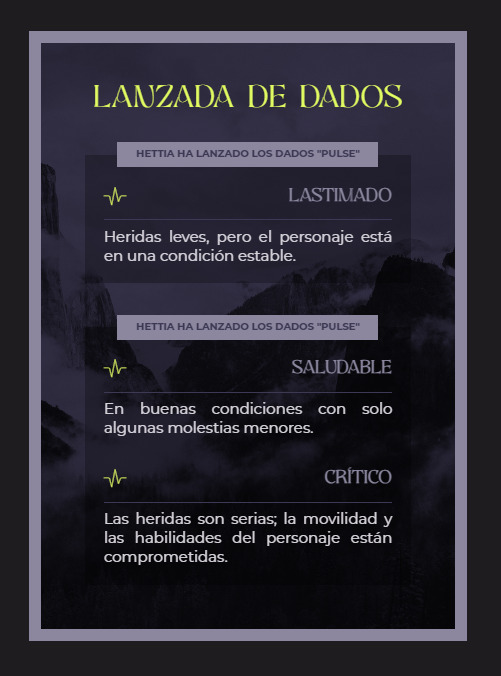
Codember2024 - Pulse
Buenas a todos, para este challenge del codember2024 organizado por @elalmacen-rp e inspirándome en pulsos, he decidido compartir un código en el que vengo trabajando hace tiempo y es un código que permite hacer que el código bbcode de la lanzada de dados se vuelva un HTML fácil de estilizar con CSS. Además, también permite modificar las lanzadas de dados para que, en vez de un número se muestre información en HTML como se muestra en la imagen permitiendo personalizar aún más cada lanzada de dado.
Os dejo los códigos comentados con notas para mejor edición, agradezco like/reblog si van a utilizar los mismos.
Ante cualquier duda, mis ask están abiertos.
Códigos
Nota: en codepen está el código HTML ya "transformado" para que puedan visualizar el estilo y cómo se vería. Además, no se puede visualizar los iconos de font awesome por cuestiones de licencia.
Para instalar correctamente, copiar el código JS en un nuevo JavaScript habilitado en todas las páginas para que también se pueda ver en el historial de mensajes (preview).
Crear un dado con el nombre 'Pulse' de seis caras, para visualizar el ejemplo. Lanzar dados de manera normal.
Aquí os dejo un pequeño video para que puedan ver cómo crear los dados y agregarle información con el JSON para que se visualice una vez que se realizan las lanzadas de dados:
Pueden incluir todo el HTML que deseen, desde imágenes, más cajas interiores, etc.
Cada nombre de dado, en el ejemplo 'Pulse', agrega una nueva clase: roll-nombre (en el ejemplo, roll-pulse) permite personalizar cada lanzada de dados a gusto permitiendo más versatilidad a la hora de diseñar el mismo.
53 notes
·
View notes
Text
Late October 2023 YouTube Unfucker
First off, here's the typical code - it still works:
youtube.com##+js(set, yt.config_.openPopupConfig.supportedPopups.adBlockMessageViewModel, false) youtube.com##+js(set, Object.prototype.adBlocksFound, 0) youtube.com##+js(set, ytplayer.config.args.raw_player_response.adPlacements, []) youtube.com##+js(set, Object.prototype.hasAllowedInstreamAd, true) www.youtube.com##ytd-enforcement-message-view-model www.youtube.com##tp-yt-iron-overlay-backdrop
The most important parts are the last two lines.
Second, have you been locked out of videos? Did YouTube give you this window:

and then replace your videos with a black rectangle?
Step 1: Disable pop-ups with the uBlock Origin menu - this will remove the black rectangle. Your videos will be revealed as unplayable 0 second videos - this can be fixed with
Step 2: Someone in a Discord I'm in dropped the simple hotfix of clearing your cache and deleting your YouTube and Google cookies - et voila, your videos work again!
While I don't know if it'll help, I would also recommend disabling your Watch History. Definite thing to do: DO NOT STACK AD BLOCKERS.
While uBO devs have to constantly reprogram their intended fix as YouTube updates to fight them 2+ times daily, they were absolutely correct in that using ad blockers on top of uBlock Origin actually helps YouTube detect them - it's safer and easier with just uBO at the moment.
Whenever uBO's intended fixes stop working (every day, for multiple hours a day), you'll find that your videos will randomly freeze despite these settings, and you'll be unable to scroll. For some reason, making the video fullscreen disables YT's javascript, and allows you to watch the video and scroll normally again.
#dashboard unfucker#dashboard fix#dashboard fixer#dashboard fixes#tumblr fix#tumblr fixes#ublock origin#dash unfucker#adblock#adblocker#youtube fix#youtube fixes#youtube fixer#youtube unfucker#yt fix#yt fixes#yt fixer#yt unfucker
151 notes
·
View notes
Text
☽ ✦ Welcome ✦ ☾

Helloo. We're the Blackout System.
☉ You may call us Astra
☉ Collectively we use They/Them pronouns.
☉ Bodily 20
☉ Black, AuDHD
☉ Generally we identify with Alterhumanity, though some of us may not.
☉ We're fine with interacting with others, and accept DMs and Asks about things. However, if you are under 16-17, we will likely block you if you attempt to befriend us, interacting with anyone below that makes us very uncomfortable. Otherwise we don't care if you interact with our posts, and it's a 50/50 on if we block you from following.

BYF...
✦ We don't participate in syscourse. We're not here to get into arguments, and would rather just share our own experiences.
✦ We don't follow back/like posts. This blog is a sideblog to our main, which we'd like to keep mostly private. We'll occasionally reblog posts here, however.
✦ We liberally use our block button. Most of the time it's not because someone did something "problematic", and is generally just us not vibing with their energy or thinking someone is generally unpleasant. Though we do block people who are genuinely problematic, we're just not gonna say shit about it here lmao.
✦ We may use terms we've coined ourselves to describe our own system online.
✦ We will not share our headmates if they're not the one posting. Do not ask, you won't receive a headcount nor names. All names are replaced with an emoji and a letter, at most, if they feel like signing off.
✦ Do not ask for our Simply Plural/Octocon, or any other social medias.
✦ We are pre-diagnosis, if that is an issue for you. While we're not seeking to get it on our medical records, we are also in the beginning stages of working with a trauma specialist to hopefully get a second opinion. This also might not be possible for many years as we live in an incredibly conservative state with few mental health opportunities.

INTERESTS AND HOBBIES...
☄ HOBBIES ☄
Digital Art, Animation, Webdev [HTML/CSS/Javascript], Gamedev [Godot], Embroidery/Sewing, Music Transcription, Tarot
☄ GAMES ☄
Secret Histories [Cultist Simulator/Book Of Hours/The Lady Afterwards], Who's Lila, Warframe, FFXIV, Fields of Mistria, Risk of Rain 2, Splatoon 3, Hollow Knight, Rain World, VTM: Bloodhunt, Valheim, Terraria, Minecraft, Don't Starve Together, Dr. Robotnik's Ring Racers
☄ DIGITAL MEDIA ☄
Chainmail Chasers, Vita Carnis, Midwest Angelica, Interloper ARG, Emesis Blue
☄ MOVIES/SHOWS ☄
Arcane [Only seen 1st season], The Owl House, Spiderverse, Delicious In Dungeon, Frieren, The Apothecary Diaries
☄ BOOKS ☄
Blood Debts/Blood Justice, The Poisons We Drink

#astra.post#actually osdd#osdd system#actually did#osddid#did system#actually dissociative#did community#osdd community#sysblr#did osdd#dissociative system#osdd#sysconversation
26 notes
·
View notes
Text
Internet censorship tactics are happening on a grand scale in secrecy. The establishment is scrubbing internet achieves across numerous platforms in an attempt to reframe public opinion and ultimately rewrite history.
Archive.org has been tracking websites since 1994, but recently, it has stopped collecting data in real-time. The website stopped archiving on October 8, 2024, with a curious explanation: Archive.org faced a Denial of Service attack (DDOS) that nearly wiped it out. Who would be targeting such a service?
The platform released the following message:Last week, along with a DDOS attack and exposure of patron email addresses and encrypted passwords, the Internet Archive’s website javascript was defaced, leading us to bring the site down to access and improve our security. The stored data of the Internet Archive is safe and we are working on resuming services safely. This new reality requires heightened attention to cyber security and we are responding. We apologize for the impact of these library services being unavailable.
A librarian for the organization said that they expect the service to be restored but was unable to provide details. “While the Wayback Machine has been in read-only mode, web crawling and archiving have continued. Those materials will be available via the Wayback Machine as services are secured.” This means that individual websites may scrub content from their site without any third-party having the ability to capture it.
Now, this is not a one-off issue. Good cache just so happened to cease service shortly after Archive.org was hacked. The service would provide users with a cached version of the website they were viewing. Google offered no explanation. It’s Google – they have the server capacity to continue this service.
The items that have not been scrubbed from the internet have been hidden by Big Tech. Joe Rogan’s viral interview with Donald Trump secured over 34 million views. Yet, Google and YouTube have altered their search engines to make the video difficult to find. Rogan was forced to post the full three-hour interview on X, one of the final frontier of free speech
AI search tools have been corrupted. Alexa, owned by Amazon, once provided a view count for various websites and services. Alexa was not originally the in-home device that we are familiar with as the company was developed independently and purchased by Amazon in 1999. Amazon coincidentally named its in-home tool “Alexa” in 2014. The company quietly removed the web ranking tool in 2022 with no explanation.
I do not offer ad space on this website as I do not want to be beholden to any third parties. We keep our services open and archive our content for future use. There is a reason that Big Tech is suddenly masking the internet while leaving no trace. They say history belongs to the victors. The establishment will ensure that they have the final say in how our stories are told to future generations.
13 notes
·
View notes
Text
The story of BASIC’s development began in 1963, when Kemeny and Kurtz, both mathematics professors at Dartmouth, recognized the need for a programming language that could be used by non-technical students. At the time, most programming languages were complex and required a strong background in mathematics and computer science. Kemeny and Kurtz wanted to create a language that would allow students from all disciplines to use computers, regardless of their technical expertise.
The development of BASIC was a collaborative effort between Kemeny, Kurtz, and a team of students, including Mary Kenneth Keller, John McGeachie, and others. The team worked tirelessly to design a language that was easy to learn and use, with a syntax that was simple and intuitive. They drew inspiration from existing programming languages, such as ALGOL and FORTRAN, but also introduced many innovative features that would become hallmarks of the BASIC language.
One of the key innovations of BASIC was its use of simple, English-like commands. Unlike other programming languages, which required users to learn complex syntax and notation, BASIC used commands such as “PRINT” and “INPUT” that were easy to understand and remember. This made it possible for non-technical users to write programs and interact with the computer, without needing to have a deep understanding of computer science.
BASIC was first implemented on the Dartmouth Time-Sharing System, a pioneering computer system that allowed multiple users to interact with the computer simultaneously. The Time-Sharing System was a major innovation in itself, as it allowed users to share the computer’s resources and work on their own projects independently. With BASIC, users could write programs, run simulations, and analyze data, all from the comfort of their own terminals.
The impact of BASIC was immediate and profound. The language quickly gained popularity, not just at Dartmouth, but also at other universities and institutions around the world. It became the language of choice for many introductory programming courses, and its simplicity and ease of use made it an ideal language for beginners. As the personal computer revolution took hold in the 1970s and 1980s, BASIC became the language of choice for many hobbyists and enthusiasts, who used it to write games, utilities, and other applications.
Today, BASIC remains a popular language, with many variants and implementations available. While it may not be as widely used as it once was, its influence can still be seen in many modern programming languages, including Visual Basic, Python, and JavaScript. The development of BASIC was a major milestone in the history of computer science, as it democratized computing and made it accessible to a wider range of people.
The Birth of BASIC (Dartmouth College, August 2014)
youtube
Friday, April 25, 2025
#basic programming language#computer science#dartmouth college#programming history#software development#technology#ai assisted writing#Youtube
7 notes
·
View notes
Text

#ao3#astronomy#bakudeku#astrophotography#crystals#biology#danny phantom#book quotes#destiel#encouragement#japan#hugh jackman#jason todd#jane austen#javascript#japanese art#joe locke#java#history#sunday hsr#black history#interview with the vampire#vintage#boku no hero academia#agatha harkness#television#this is what makes us girls#football#fashion#gif
0 notes
Text


They say the city never forgets a name and PRIYA GADALA is no testament to that. The THIRTY-THREE-year-old has carved out their place in NYC’s underbelly. On the surface, they’re all ELOQUENT, smooth moves and sharp eyes. But dig a little deeper and you’ll find something far more dangerous , UNDERHANDED, with no hesitation and even less remorse. They move through the streets like they own them, wearing the colors of THE ASSEMBLY and running the game as a THE DIRECTOR. Some say they’ve always been here. Others swear something’s changed. Either way, they’re not just part of the story. They’re rewriting it.
“Control the narrative. Rewrite the rules. Become inevitable — or be erased.”
📌 Basic Profile
Full Name: Priya Shalini Gadala Age: 33 Gender: Cisgender female (she/her) Ethnicity: Indian-American Face Claim: Sobhita Dhulipala Sexuality: Bisexual, but is private about her relationships Role: Director of The Assembly (Leader) Affiliation: The Assembly – one of NYC’s criminal syndicates Primary Focus: Political manipulation through surveillance, sabotage, and digital warfare Fluent In: English, Hindi, French (conversational), Python, JavaScript, and the language of power Public Persona: Reclusive political consultant, ex-rising star, rumored ghost of her former self Private Reputation: Coldly brilliant, deeply dangerous, unrelentingly composed
🧠 PERSONALITY — DEEP BREAKDOWN
ELITE + UNDERGROUND
Priya lives in two worlds. One foot in the mahogany halls of the elite, the other in the digital alleyways of modern warfare. She knows how to wear couture and keystroke a scandal. She can kill a career with an email — or a whisper.
✴️ POSITIVE TRAITS
Eloquent & Persuasive: Speaks like a diplomat, argues like a lawyer, convinces like a cult leader.
Strategic: She doesn’t make decisions — she builds scenarios. Sees moves five steps ahead.
Disciplined: Obsessed with self-control. Her routine is meticulous. She doesn’t break character, ever.
Loyal (Selectively): If she trusts you (which is rare), she will protect you with quiet violence.
❌ NEGATIVE TRAITS
Paranoid: She trusts no one completely. Every conversation is recorded. Every alliance has a contingency plan.
Detached: Emotionally vacant in crisis. She doesn’t mourn casualties — she calculates fallout.
Vengeful: She never forgets. Her justice may take years, but it will come — and it will be precise.
Morally Fluid: She’ll ruin lives if it moves the agenda forward. And she sleeps fine afterward.
💻 SKILLS & EXPERTISE
Cyber Espionage: Elite hacker. Surveillance architect. Can find or destroy any digital trail.
Political Sabotage: Expert at blackmail, narrative control, strategic leaks, and reputation manipulation.
Linguistic Warfare: Fluent in three spoken languages and several coding ones. Words are her deadliest weapon.
Psychological Profiling: She builds files on people — weaknesses, traumas, pressure points.
Self-Defense Training: Carries a stiletto knife. Has trained in Krav Maga. Doesn’t often fight — but finishes it when she does.
🕶 RUMORS
“She dated the person who took her down — and framed them in return.”
“She’s not just running The Assembly — she’s building something bigger under it.”
“The Assembly didn’t recruit her. She manipulated them into giving her the throne.”
“She has a full dossier on every major political figure in New York — and passwords to match.”
“She cried during one meeting. Once. It ended with someone being exiled.”
🩸 MOTIVATIONS
Control the narrative. Words can be rewritten. So can history.
Never be powerless again. She was silenced once — never again.
Redesign justice. If the system failed her, she’ll redesign the system.
Legacy. She doesn’t just want power. She wants to become inevitable.
🗺 BACKSTORY
⌁ ACT I: THE GENERAL’S DAUGHTER
Born on the Ramstein Air Base in Germany to a powerful Indian-American military family, Priya Shalini Gadala entered the world under fluorescent lights and classified orders. Her father was a decorated U.S. Air Force general — stoic, calculating, and honored across multiple continents. Her mother, once a rising star in India’s foreign service, gave up her career to become a diplomat’s wife and raise their only child between cultures, continents, and conflict zones.
Priya’s childhood was defined by protocol and movement. By the age of twelve, she had lived in seven countries and could list the names of every U.S. Ambassador in Asia. Dinner conversations were filled with military briefings and diplomatic gambits. There was never time for toys or lullabies — only strategy, perception, and control. Her parents didn’t raise a daughter. They raised a weapon in a silk blouse.
She was the type of child who read statecraft manuals before bedtime and memorized classified codes for fun. In Tokyo, she learned silence. In Riyadh, she learned how power cloaks itself in respectability. In Berlin, she learned that everyone has something to hide.
⌁ ACT II: THE GIRL WHO WANTED TO RULE
At fourteen, her family relocated to New York. Her father’s final post. The city was chaos and clarity — fast, brutal, and impossible to ignore. Priya was enrolled in one of the most elite private academies in Manhattan, where legacy mattered more than GPA, and every student carried a last name that could get them into Harvard by default.
But Priya didn’t coast. She conquered. Captain of the debate team. Founder of the ethics council. Fluent in two programming languages by sixteen. Every paper she wrote felt like a chess move. Every student council victory like a quiet coup. Her charm was disarming; her ambition unshakable. Teachers whispered she was destined for a cabinet position. Her classmates? They were too busy trying to keep up.
College came easily — a full ride to Columbia, where she double-majored in Political Science and Computer Science, chasing the dream of becoming a modern-day diplomat who could code her way into policy. She interned at embassies. Made connections with campaign staffers. By the time she graduated, she was being quietly recruited for fast-tracked government fellowships.
Everything was going according to plan.
⌁ ACT III: THE FALL
It began with silence. A missed call from a trusted contact. A headline in a local political blog questioning donations to a candidate she once volunteered for. A rumor about a foreign donor. And then — a leak.
An email. A photo.
Disinformation dressed as fact, weaponized through the very platforms she understood better than anyone.
The scandal was vague but devastating. No formal charges were filed, but a whisper campaign drowned her. She was painted as compromised, ambitious, unethical. Offices that once courted her stopped responding. Organizations quietly distanced themselves. Even those closest to her looked away, uncertain whether to fight for her or flee her.
Priya never discovered the source of the betrayal — only that it came from inside the political world she’d devoted her life to. A hand she may have shaken. A favor she refused. A secret someone was afraid she knew. She never named them. She never had to.
They did their job.
At 25, her future in public office was already dead.
⌁ ACT IV: THE ASSEMBLY
Rock bottom didn’t look like ruin. It looked like a one-bedroom walk-up in Long Island City, coded silence in dark corners of the internet, and endless nights rewriting résumés that would never land.
Until one night, a knock came.
A woman in a clean-cut gray suit. An offer that was less invitation, more unveiling.
The Assembly.
At first, she was skeptical. She didn’t join causes — she built them. But The Assembly wasn’t idealists in hoodies. It was infrastructure. Operatives. A network. A strategy. They said they exposed corruption and controlled digital narratives. That they worked from the shadows to make sure power was never unchecked.
They offered her a place. And the tools to rewrite the world that had turned on her.
She accepted.
⌁ ACT V: REBIRTH
What started as a second chance became an evolution. Priya didn’t just join The Assembly — she reshaped it. Her mind worked differently: faster, colder, with the insight of someone who had once believed in public service and been devoured by it.
Over five years, she rose quietly. Executed missions with precision. Built new systems for surveillance, control, and influence. Her impact was undeniable. She could silence journalists, rewrite headlines, and collapse local campaigns with a whisper on a burner phone.
When the former Director retired three years ago — peacefully, voluntarily — there was no contest. The Assembly didn’t elect her out of loyalty. They chose her out of fear, respect, and necessity.
At 30, Priya became the Director.
Now, she rules The Assembly like a chess master rules a board — from three moves away, with bloodless precision. Under her, the group shifted from exposing truth to redefining it. Their targets are calculated. Their morality, malleable. Their loyalty, absolute — or eradicated.
⌁ ACT VI: PRESENT DAY
She lives in a penthouse above a flower shop, far from the image of the idealistic diplomat she once aspired to be. There are no framed degrees on the wall. Just screens. A wine bar. And a war room. She keeps old campaign buttons in a drawer, alongside a handwritten note from someone she once trusted.
Sometimes, late at night, she replays her interviews with political journalists. The ones before the fall.
She doesn’t miss who she was. But sometimes, she wonders who she would’ve become.
Now, the world only knows her by reputation:
The Director.
Elegant. Untouchable. Precise. Dangerous.
A woman who moves like a shadow across political battlegrounds, toppling giants and building puppets.
She doesn’t want revenge anymore.
She wants reconstruction.
4 notes
·
View notes
Text
day 8/100

life is just throwing me for an absolute loop these days, but im starting my adventure into javascript :) i didn't do a ton of coding today, but i learned about the history of javascript as well as 2 ways of running it in the browser, both in html files within the script tag and in an REPL (also one way of declaring a variable cause i think there are others but im not sure) <3
#this is exciting for me cause its like the first 'functional' language that im learning#which for me is like more than just aesthetics like html and css were#even though i definitely still need to continue practice with those i feel like building projects with javascript will let me practice all#codeblr#progblr#100 days of code#html#studyblr
71 notes
·
View notes
Note
Hiya!! I am taking a coding course at a University. While it's excellent for learning how to use a lot of complicated concepts in programming, we don't really get to do any projects or create anything yet. I was wondering how to get into that. Are there any resources you might recommend?
Hiya!! 💞
Goodie, you want to build your own projects! That's so good, I love project building! Now, it depends what you're coding (the languages + specific area) e.g. are you learning HTML/CSS/JavaScript (Website building) or is it like Python/Java/C# idk but you get what I'm asking for here, the projects you want to learn and build depends on what you're learning in the first place! But I will give some general advice!

🎥 YouTube
I love YouTube so much, there are thousands of videos on that site for any programming language to building pretty much anything! What I did when I started off was the simple search of "[The coding language] beginner project" and then I get to see what I can build. Now if you get stuck on a snippet of code, Google it and there are sites that will explain it for you. Now, don't fall for tutorial hell where you're watching tutorial after tutorial videos but watching them will give you a good foundation!
🔍 Google
Similar to what I said for the YouTube way, you can Google the same question and it will give you a bunch of project ideas, how to even do them and all you can do also is add more on top, what I mean is don't just watch or read about a project idea, see how you can twist it your own style e.g. recently I watched a React.js tutorial on how to make a to-do app! My twist was I styled it different by adding a frog theme. So the tutorial was my foundation and I just added on top of that to further exercise my skills!
🌐 GitHub
Have a hub for all your projects! After creating your projects, you don't just want it sitting on your computer, you can put it online! I use GitHub - it's a place where you can store all your projects, have a save history so you can go back on old code, even share the static webpages you make (using HTML/CSS/JavaScript) with other people online! The Site | How to use GitHub | Check out my GitHub for reference
📚 Online Courses
Many online platforms offer project-based courses. Websites like Udemy, Coursera, Codecademy and FreeCodeCamp can guide you through creating practical projects step by step. I use Udemy for learning and there are courses that are like "Build 9 web development projects blah blah blah" they're actually really good! BUT you do have to pay for them but if you can't find a good project on YouTube to follow or you can visualise or understand the articles online on how to build one, I suggest getting a course because someone teaches you how to make the project. Udemy is fairly cheap during their sales, going down from £59.99 to £10.99!
🤗 Collaboration
Reach out to classmates to build together, someone is bound to have an idea for something! Collaborative projects not only expand your skill set but also let you learn from others. Great skill to have! You can even collab on GitHub projects - which I am doing right now with people I've met through Tumblr (checkout our project)!
Remember, Rome wasn't built in a day! Start with small projects, gradually challenging yourself with larger ones. The journey of creating is just as exciting as the finished project itself. Happy coding! 😎🙌🏾💻💗

43 notes
·
View notes
Text
A brief history of website building
Static files manually edited over FTP
Dynamic files edited over FTP
Markdown/DB + dynamic files
Custom CMSs in source control
Browser wars + Javascript
Frameworks
Mobile
Dependency management
Headless + lean artisinal stacks
Visual Editors + live preview
Collaborative cloud stack
AI generated, who cares
Am I missing something?
Should I try to put approx years on it?
2 notes
·
View notes